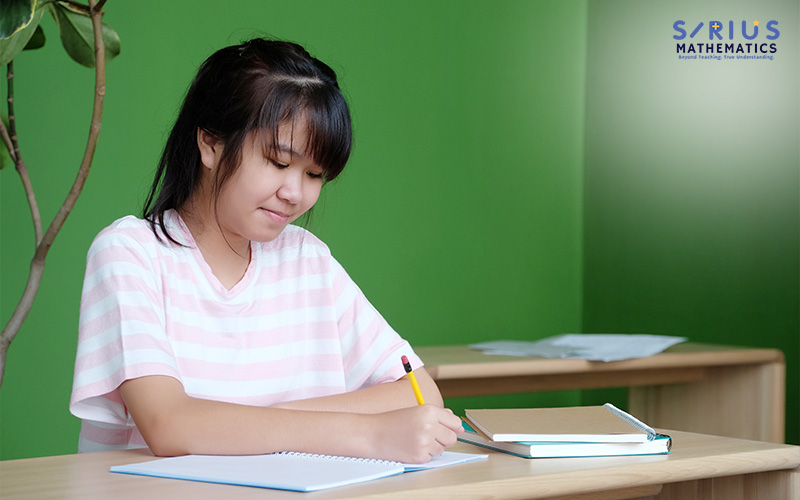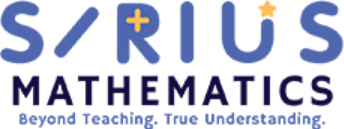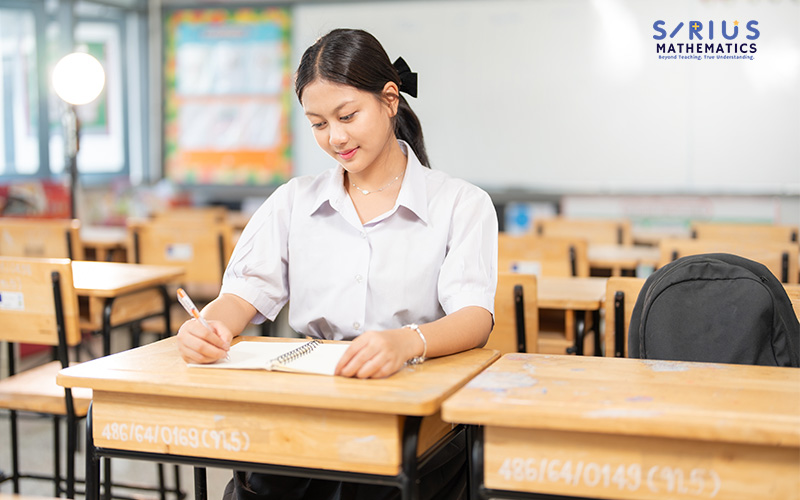Key Takeaways:
- What Should P6 Students Take Note of from the New Primary Math Syllabus?
The updated syllabus requires P6 students to master complex topics like ratio and average earlier. It also emphasises conceptual understanding and real-world problem-solving, making hands-on math learning and strong foundational skills essential.
Introduction
If you’re a Primary 6 student in Singapore or the parent of one, you’ve likely heard that the primary math syllabus has changed. As of 2024, the Ministry of Education introduced a significant MOE curriculum shift. The changes are aimed at streamlining learning by reducing content overload and repetitive drills, while smoothing the transition to secondary school by focusing on skills like logical reasoning and application. Some topics were pulled forward to earlier levels, while others were removed altogether.
For P6 students, this means the math paper may look very different from what older siblings or cousins encountered just a year or two ago. So, how can you prepare for these changes? Read on to learn more.
What Are the Key Changes in the Primary Math Syllabus?
To understand the bigger picture, let’s first look at the topic progression by level:
- Primary 3: 12-hour and 24-hour time lessons have been brought forward from Primary 5.
- Primary 4: Pie charts and nets of solids have shifted down from Primary 6.
- Primary 5: The syllabus has been lightened to focus deeply on mastering fractions, decimals, and percentages.
- Primary 6: Students now tackle ratio and average topics that used to be taught in Primary 5.
- Removed Topics: Speed (now introduced in Secondary 1), Turns, and the 8-point Compass.
These shifts mean students need to grasp complex concepts like ratio and average earlier, often through multi-step problem sums that require proportional reasoning and logical thinking. With greater depth, they make a solid foundational understanding more critical than ever.
Why These Changes Matter to P6 Students
For students taking the PSLE this year, the inclusion of ratio and average as core topics in the Primary 6 math syllabus signals a stronger emphasis on problem-solving and conceptual application in Paper 2. Instead of just memorising formulas or following fixed steps, you’ll be expected to think critically, reason logically, and apply maths to real-world situations.
Data handling remains an important skill, with pie charts now introduced earlier at Primary 4. This reinforces the continuous development of interpretation and analysis abilities.
To prepare effectively, it’s no longer enough to rely solely on repetitive worksheets. This is where hands-on math learning becomes essential. By using visual models, bar diagrams, and manipulatives like fraction tiles or counters, students can better understand abstract concepts such as proportional relationships or the distribution of quantities. These teaching methods align with MOE’s Assessment Objectives, which prioritise understanding, reasoning, and communication over rote learning.
How Parents Can Support P6 Math Learning at Home
With traditionally “tough” topics now introduced earlier, students in the lower primary levels are facing content that was once reserved for upper primary. To support this shift, a PSLE maths tuition programme can provide supplementary support by bridging learning gaps. It can also equip students with strategies to tackle complex, multi-step questions effectively.
Apart from tuition, parental support strategies are equally important. Here’s how they can help:
1. Start Early
Don’t wait until P6 to support your child’s learning. Build conceptual understanding and problem-solving skills from Primary 3 onwards.

2. Choose the Right Tuition Centre
Enrol in a Singapore maths tuition centre that aligns with the new MOE direction and focuses on conceptual depth, reasoning skills, and application, not speed or rote drills. Not just simply preparing for exams, the tuition programmes should also emphasise showing the real-world relevance of mathematical concepts to help students understand how their knowledge connects to everyday life.
3. Apply Maths at Home
Reinforce concepts through daily activities. Use cooking to practise fractions and ratios, shopping to calculate totals and discounts, and budgeting to understand percentages. Simple games and puzzles can also build reasoning and problem-solving skills while showing how math applies to real life.
4. Communicate with Teachers and Tutors
Stay in touch with your child’s math tutor in Singapore to keep tabs on progress and topic coverage.
Getting Ready for PSLE: What Truly Matters
Navigating the new primary math syllabus doesn’t have to be overwhelming. With early support, consistent hands-on math learning, and the right guidance, you can master the core mathematical ideas and ace your PSLE math exams. The focus is now on demonstrating clear understanding, sound reasoning, and the ability to apply concepts rather than just memorising procedures.
Looking for a dependable maths tuition centre in Singapore? Sirius Mathematics is here to support your learning path. Our tutors are well-versed in the updated primary math syllabus and specialise in teaching methods that make complex topics clear, relatable, and easy to grasp.
Talk to us today and let’s make math make sense together.

